New puppy checklist: What to prepare before your puppy arrives.
- Written by Joshua Gordon
- Last updated
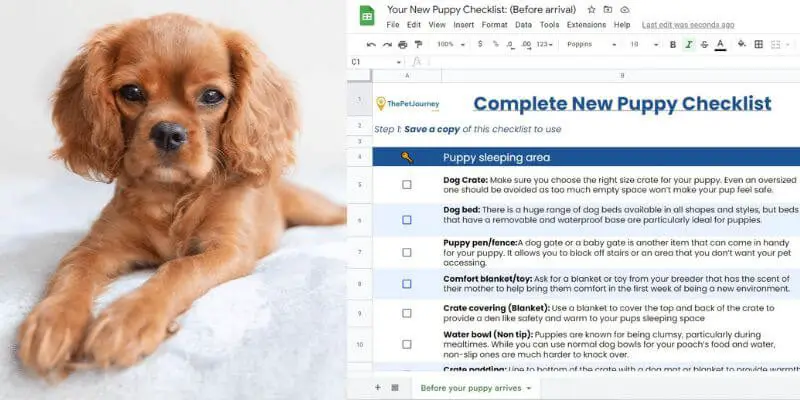
In this article
Access our new puppy checklist
Before you welcome your puppy into your home, it’s best to use that spare time to make some preparations for your new four-legged friend. Download our Google sheets new puppy checklist or read on for more information.
How to access the new puppy checklist
- Follow the link to Google sheets
- SAVE and COPY your own version of the checklist so you can make your additions.

The Vet's advice for new puppy owners
"My best advice for the first time puppy owner is to not under estimate the work involved. Having a new puppy is exhausting as you cater to their every need and deal with frequent night wakes and indoor accidents.
Even the best behaved puppy will turns your life upside down a little, at least in the first few months. Make sure you have committed to putting in the hard work and you will then reap the rewards"
- Dr Linda Simon MVB MRCVS
Puppy Pen/Sleeping Area
First thing’s first, you’ll need to select a sleeping area for your puppy. For at least the first week, your puppy is likely to be restless and upset during the night.
Being in unfamiliar surroundings away from their mother will be stressful, so it’s best to let your pup sleep in the same room as you, at least for the first week. Having your presence nearby will make them feel more at ease and reassured.
A puppy crate or a puppy pen makes a good sleeping area for your puppy. Either one gives your dog a secure area to sleep so they can’t get into any mischief during the night.
Put the pen in a quiet spot in your room, ideally away from the door so they’re not disturbed when you walk past.
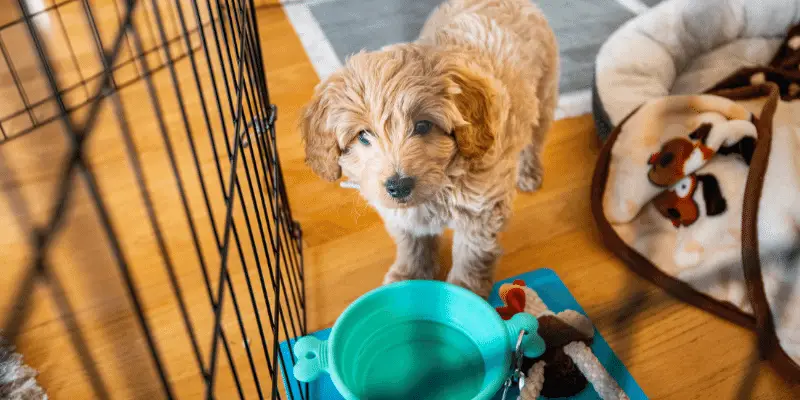
Dog Crate
Similar to a puppy pen, a dog crate acts as a safe den for your young dog. With training, your puppy will view their crate as a cosy area to retreat to when they’re upset or tired.
Your puppy’s crate needs to be big enough so they can sit up straight without hitting their head. They should also be able to turn around and lay down with ease.
Make sure you choose the right size crate for your puppy. Even an oversized one should be avoided as too much empty space won’t make your pup feel safe.
Puppies grow rapidly, so rather than upgrading your pooch’s crate as they get bigger, consider buying one that can accommodate their adult size. You can section off a part of the crate using a divider when your puppy is young, which you can then remove at a later date.

Dog Bed
Alongside a dog crate and a puppy pen, your new companion needs a warm bed so they can get a good night’s sleep. There is a huge range of dog beds available in all shapes and styles, but beds that have a removable and waterproof base are particularly ideal for puppies.
Accidents are a given when you own a puppy, especially during the housebreaking stage. Beds that can be wiped down make cleaning up messes a lot easier.
For this reason, you might want to opt for a bed that’s made out of a hard material such as plastic. If you go for a hard dog basket, make sure you put a soft blanket or pillow inside it for added comfort.
No matter what type of bed you get for your puppy, it should be big enough so they can lie down freely in all natural positions.
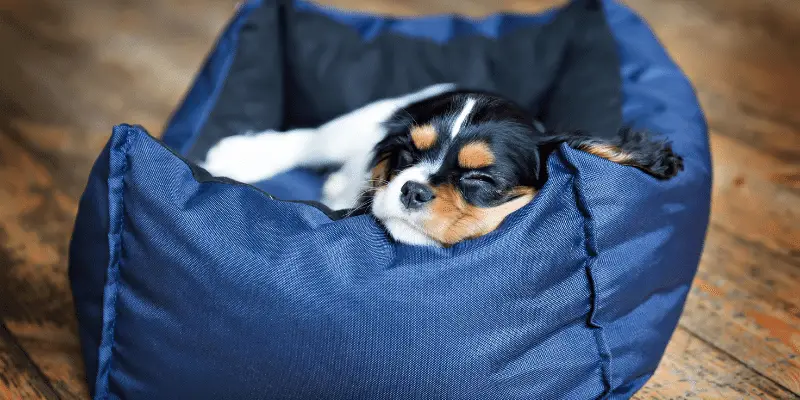
Puppy Gates
A dog gate or a baby gate is another item that can come in handy for your puppy. It allows you to block off stairs or an area that you don’t want your pet accessing.
This is particularly useful for when you are busy with other things and can’t give your pup your full attention. Using a dog gate keeps your dog from getting into trouble without confining them to a crate or pen.
Non-Tip Dog Bowls
Puppies are known for being clumsy, particularly during mealtimes. While you can use normal dog bowls for your pooch’s food and water, non-slip ones are much harder to knock over.
This helps reduce spillages when your four-legged friend eats and drinks, keeping their feeding area cleaner. Non-slip dog bowls are normally ceramic or stainless steel, which are both sturdier and more durable materials than plastic bowls.
For more information read our guide on how much water your puppy should be getting.
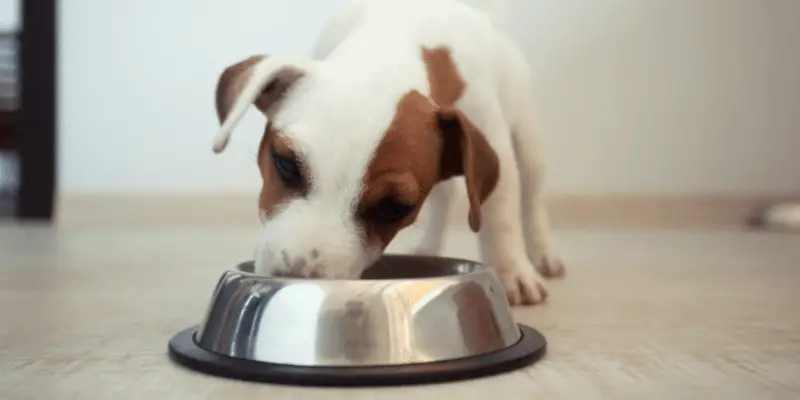
Puppy Pads for Toilet Training
Your new puppy won’t be housetrained from the get-go, so it’s up to you to teach them the appropriate place to do their business. Puppy pads make toilet training a lot easier and help you keep your floors clean.
Take your dog over to the puppy pad every hour or whenever you think they need the toilet. If they pee or poop on the pad, praise them or reward them with a treat.
Consistency and patience are key when housetraining your puppy, so don’t expect them to get the hang of it immediately.
Puppy Proofing
Before your puppy arrives, it’s a good idea to pet-proof your home so you can keep them safe and out of trouble.
Dangerous Items
Puppies have a habit of getting into things they’re not supposed to, so you need to make sure that they can’t access anything that could harm them.
Unplug any electrical devices your puppy could access and make sure they can’t get their paws on any wires. Sharp or small objects should be moved out of reach of your dog as they could be a choking hazard.
If there are any small holes or gaps around your home, block them off so your puppy can’t squeeze into them and potentially hurt themselves. Your garden should also be secure and fenced to prevent any escapades.
Plants and Potential Poisonous Items
Alongside puppy-proofing your home for dangerous items, you’ll also need to keep an eye out for poisonous items. Plants especially can be a serious risk to your puppies if they are ingested.
Edible Poisonous Items
- Chocolate
- Onion
- Garlic
- Grapes and raisins
- Caffeine
- Tobacco products (including e-cigarette liquids)
- Xylitol (often found in toothpaste, cough syrup, and sugar-free sweets like chewing gum)
- Salt
- Fatty foods
- Macadamia nuts
- Medication
- Alcohol
Non-Edible Poisonous Items
- Cleaning products
- Fabric softener sheets
- Lawn fertilisers and weed killers
- Insecticides and pesticides
- Mothballs
- Paints and solvents
- Rat and mouse bait
- Liquid potpourri
- Salt dough and playdough
Poisonous Plants
- Foxglove
- Aloe Vera
- Peace Lily
- Stinging Nettle
- Amaryllis
- English Ivy
- Dogbane
- Peace Lily
- Chrysanthemum
- Hibiscus
- Daphne
- Castor Bean
- Poinsettia
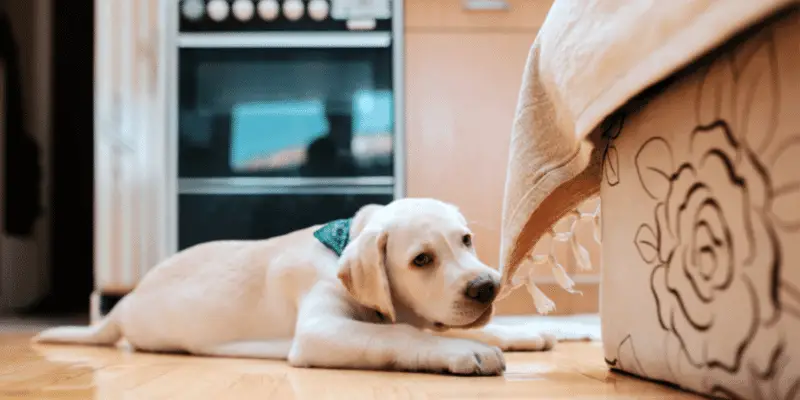
No-Chew Spray
Using no-chew sprays can be helpful for puppies as it helps deter them from munching on inappropriate items or your favourite pair of shoes.
Anti-chew sprays contain safe but unpleasant-tasting ingredients. Once applied to an object, they discourage your dog from chewing on it simply because it doesn’t taste very nice.
Chews
One of the most important items you’ll need for your puppy is chews and lots of them! All dogs have a natural instinct to chew, especially when they are young.
Puppies will gnaw on anything, so if you don’t want them chomping on your furniture or belongings, make sure you provide them with an assortment of chew toys.
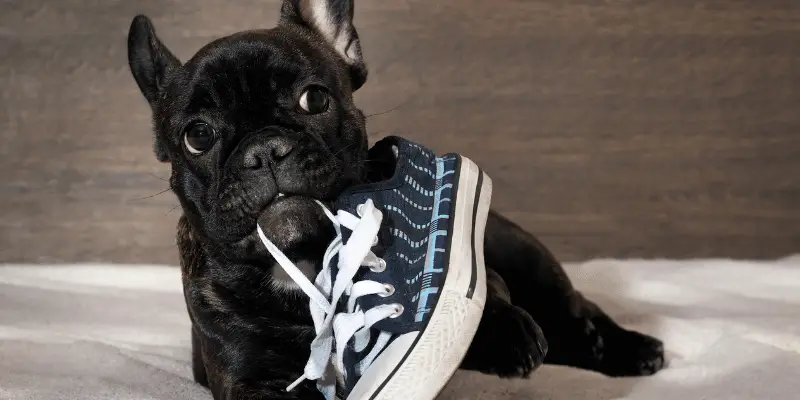
Collar
All dogs need to wear a collar with identification details by law. Adult sized collars will probably be too big for your puppy, so you’ll likely need one designed specifically for puppies.
The collar should not be too loose or too tight around your dog’s neck. You should be able to slip two fingers between the collar and your puppy’s neck.
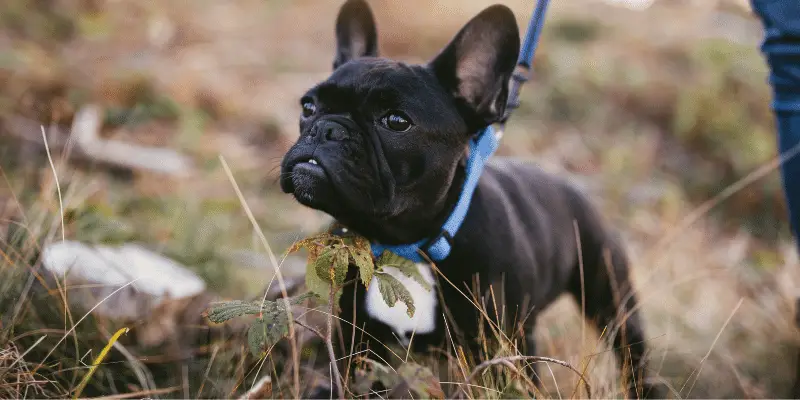
Leash and Harness
Once your puppy has finished their second round of vaccinations, they are allowed to go on walks. You’ll need a leash and harness so you can control your pooch and keep them safe outdoors.
There are specially designed puppy harnesses that will fit your tiny companion, though you will need to upgrade to a larger harness as they grow.
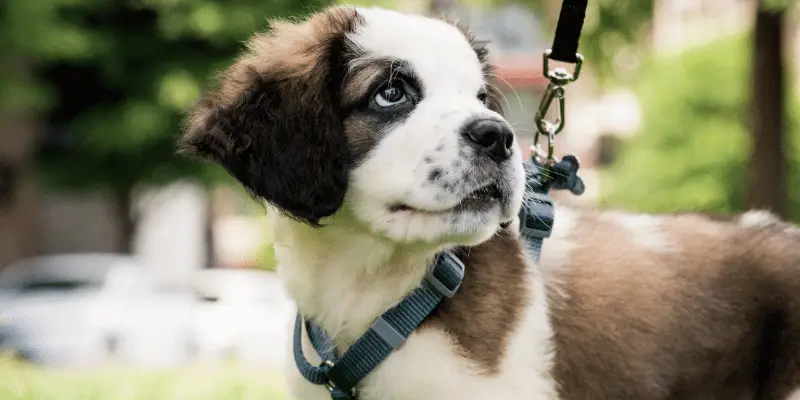
Poo Bags
When you’re out and about with your puppy, there will come a time when they go to the toilet. Poo bags make the job a little easier (don’t be one of those owners who doesn’t clean up after their dogs!) and you can even get scented ones so the ordeal is a bit less stinky.
Grooming
Grooming is an important part of dog care, even if your puppy isn’t a long-haired breed. Nail clippers, pet brushes, dog ear cleaner, cotton wool pads, and styptic powder are some items your grooming kit should contain.
Dog Shampoo
Dogs can get pretty smelly sometimes, and puppies have a tendency to walk in their own messes. When it’s time for your pooch’s bath, don’t be tempted to use human shampoo as it can irritate your pup’s skin.
Shampoo targeted for dogs should be used to wash your puppy as it’s much gentler and won’t dry out their coat.
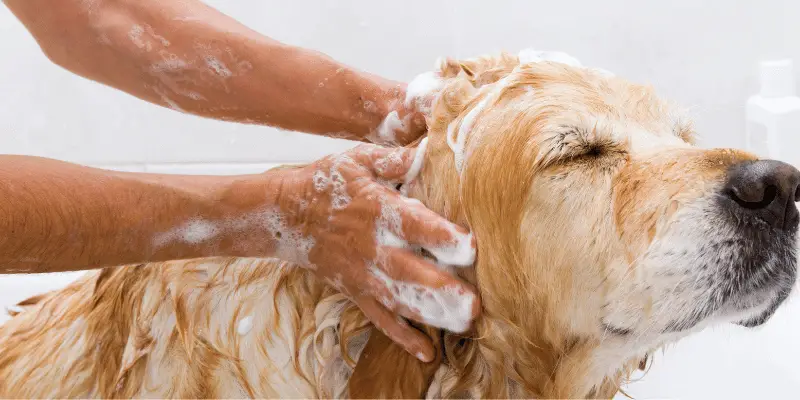
Dog Toothpaste and Toothbrush
Just like people, dogs need to have their teeth brushed to prevent dental issues like gum disease and plaque buildup. However, human toothpaste is unsuitable for dogs as it usually contains Xylitol, which is highly toxic to canines.
You can use a dog toothbrush to clean your dog’s teeth or a human one as long as it has soft bristles.
Puppy-Friendly Toys
Without their littermates around, your puppy will need a new playmate, which is where you come in. Toys offer enrichment for your dog by keeping them mentally stimulated. No puppy home is complete without toys scattered around everywhere!
Chews
All puppies go through teething, which can have some unpleasant consequences, especially if they decide to use your furniture or household items as chew toys. Even worse, they might nibble your fingers, and those tiny teeth are surprisingly sharp.
That’s why you should make sure your puppy has plenty of chews to keep them occupied, giving your belongings and hands a break. Rubber bones, rope toys, and tennis balls are some particularly good choices for puppies.
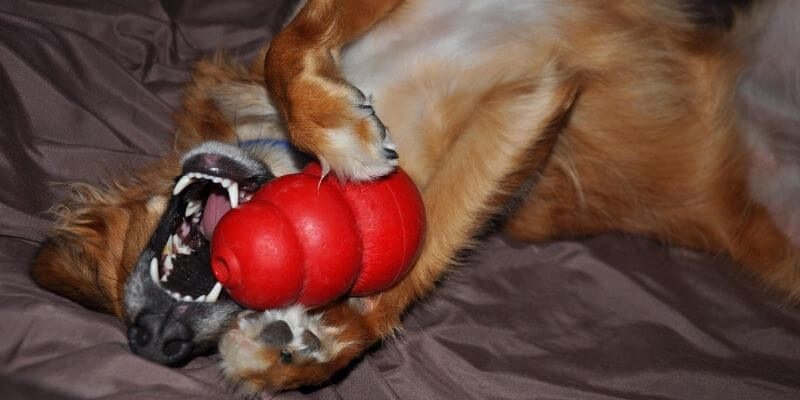
Kongs
If you’re after a long-lasting toy for your puppy, the Kong Classic is an excellent choice. They come in all shapes, sizes, and colours, and are extremely durable (perfect for teething dogs!).
Kongs also act as a great boredom breaker as you can fill the bottom of the toy with treats or puppy food. Your pooch will then have to roll and knock around the Kong to get the tasty food inside.
Food
Nutrition is important for your pup’s development, so make sure you provide them with the best food that you can.
Find a Place for the Puppy to Eat
It’s entirely up to you where you feed your puppy, but preferably, it should be on uncarpeted floors as dogs are messy eaters.
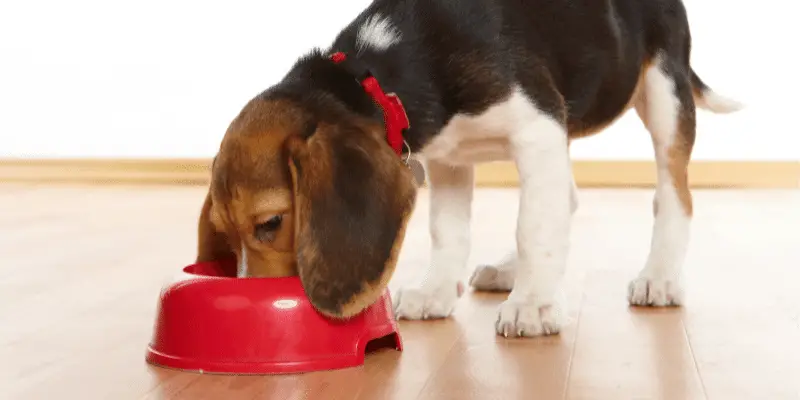
Puppy Food
As puppies are constantly growing, they require a healthy and high-quality diet that meets their nutritional requirements. Puppies shouldn’t be fed adult food as it doesn’t contain enough protein or calories that young dogs need for proper development.
Once your puppy is close to their adult height, you’ll be able to transition them to adult dog food.
Puppy Treats
During training or when your pooch has been well-behaved, treats make great rewards. However, some dog treats are inappropriate for puppies as they are too large for them to eat or they contain ingredients that could upset their stomach (puppies usually have much more sensitive tummies than adults!).
When picking out treats for your puppy, check the back to see if they are suitable for your young dog.
Find a Vet You Trust
For your puppy’s vaccinations and in the chance they become unwell, you should register with a vet that is reliable and trustworthy. The veterinary practice should be close to you so you don’t need to travel very far to reach it, particularly in emergency cases.
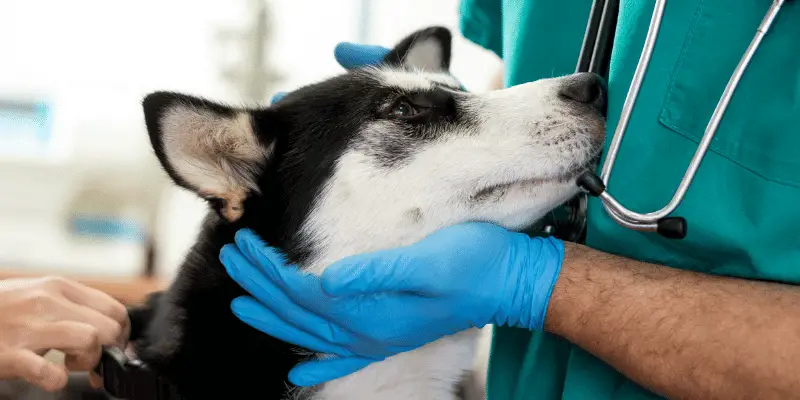
Name and ID Tags
It’s against the law for dogs to go out in public without a collar and ID tag, so you’ll need to make sure your puppy wears one during a walk. The ID tag should display your name and address on it.
Flea and Tick Meds
Fleas and ticks can wreak havoc if they jump onto your puppy, which is why you should always make sure they are up-to-date with their flea and tick medication.
Puppies over the age of 8 weeks can use many commercial flea and tick treatments, but always double-check that the preventives you want to use are suitable for young dogs.
Heartworm Meds
In addition to flea and tick meds, your puppy will need to receive preventative heartworm medication regularly. They should be wormed every 2 weeks until they are 16 weeks old and then after that, every 3 months.
Travel
When you pick up your puppy from their old owners or take them to the vets, you’ll want to ensure they are safe and secure during transport.
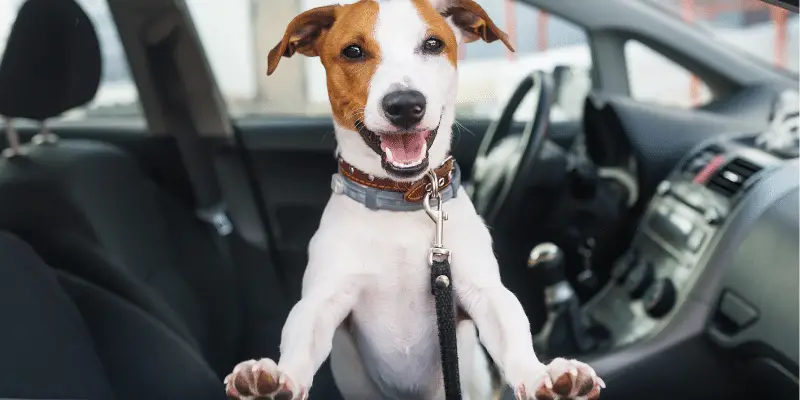
Car Harness, Car Crate, or Dog Guard
Whenever you need to travel with your puppy, it’s important to keep them safe and secure. A car harness, dog crate, or dog guard will ensure your pup stays out of harm’s way when they’re on the road.
If you’re after some dog crate recommendations, we have an entire guide showcasing some of the best ones.
Training
Whenever you need to travel with your puppy, it’s important to keep them safe and secure. A car harness, dog crate, or dog guard will ensure your pup stays out of harm’s way when they’re on the road.
If you’re after some dog crate recommendations, we have an entire guide showcasing some of the best ones.
Find a Puppy Trainer or Training Resources
Before you train your puppy, you should check out training guides or books to ensure you follow the most effective methods. Alternatively, you might want to invest in a puppy trainer to assist you if you’re struggling or have limited time.
Clicker
A clicker can help you make training your puppy both easier and more efficient. Positive reinforcement is important when teaching your pup good behaviour or tricks.
Cleaning
When you live with a puppy, you’ll inevitably be cleaning up after them. Whether it’s because they peed on your expensive rug or threw up on your sofa, you’ll want to have some cleaning supplies like disinfectant and pet cleaner in your cupboard.
Stain and Odour Removals
When puppies have an accident, it can leave behind a stain or foul-smelling odour that can be difficult to remove. Pet stain and odour removal products contain ingredients that break down the enzymes found in urine, faeces, and vomit to help eliminate the stain and the smell.
Paper Towels
Lastly, you can never have too many paper towels for cleaning up messes your puppy has left you. And there will be a lot of these as pups are right little troublemakers!
Complete Puppy Item Checklist
- Puppy pen
- Dog crate
- Dog bed
- Puppy gates
- Non-tip dog bowls
- Puppy pads
- Puppy-proofed home
- No-chew spray
- Chews
- Collar
- Leash and harness
- Poo bags
- Grooming kit
- Dog shampoo
- Dog toothpaste and toothbrush
- Puppy toys
- Puppy food and treats
- Name and ID tags
- Flea, tick, and heartworm medication
- Car harness or car crate
- Clicker
- Puppy cleaning supplies
- Stain and odour removal products
- Paper towels
References
- https://www.pdsa.org.uk/taking-care-of-your-pet/looking-after-your-pet/puppies-dogs/crate-training
- https://www.fda.gov/animal-veterinary/animal-health-literacy/potentially-dangerous-items-your-pet
- https://www.akc.org/expert-advice/health/puppy-teething-and-nipping/
- https://www.akc.org/expert-advice/health/human-shampoo-on-dogs/
- https://www.pdsa.org.uk/taking-care-of-your-pet/pet-health-hub/conditions/worms-in-dogs
- https://www.akc.org/expert-advice/training/clicker-training-your-dog-mark-and-reward/

Written by: Joshua Gordon
Head of Research and Editorial, Joshua has over 7 years of experience as a finance and automotive research consultant. He is a childhood pet owner and dog enthusiast.


